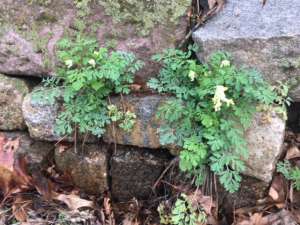Alanna Bozman, a gardener at Chester Avenue Community Garden, shares her favorite early spring blossoms now growing in the garden!
Daffodils (Narcissus): The standard-bearers of spring. Found in the large front bed, along the side walkway, and in several beds in the back.
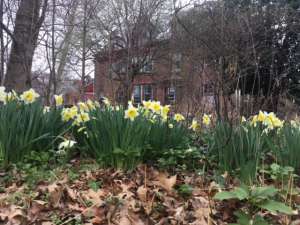
Crocus (Crocus): Absolutely adorable! Easily my favorite early spring flower. Most of ours are purple, but we have a few in both orange and white. Unfortunately, many of our crocuses took a beating in yesterday’s rain. Found in the large front bed.
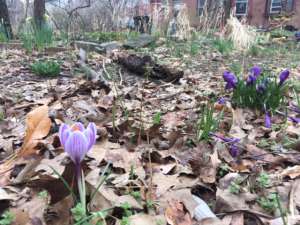
Cornelian Cherry Dogwood (Cornus mas): Without the large bracts of its dogwood cousins, Cornus mas isn’t quite as showy as Cornus florida or Cornus kousa. But its bright yellow flowers are a sure sign of spring. Found along the front walkway and in the open portion of the back side fence.
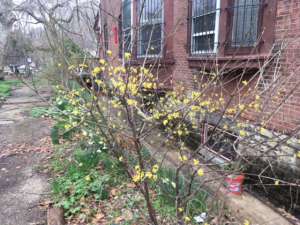
Grape Hyacinth (Muscari armeniacum): Small and cheery. Not a true hyacinth. The spikes of diminutive purple flowers resemble a cluster of tiny grapes. Found along the front walkway.
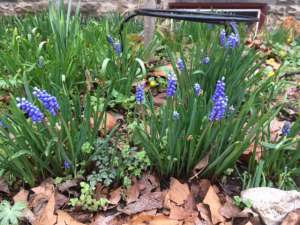
Lesser Celandine (Ficaria verna, formerly Ranunculus ficaria): Oh, lesser celandine! It has a cute flower, but I hate it! It’s aggressively invasive and nearly impossible to remove. The small tuberous roots easily break off when pulled and each tuber can grow a new plant. Currently visible in a few spots in the garden, but soon will be found carpeting large sections of the front and back gardens.
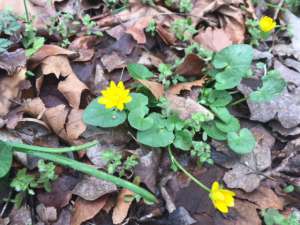
Hellebore (Helleborus): Also called Lenten rose because it blooms during Lent. The flowers are a little bashful, tending to nod down towards the earth. To truly appreciate their beauty, one must bend down and tilt the blossom upward. Found along the front walkway.
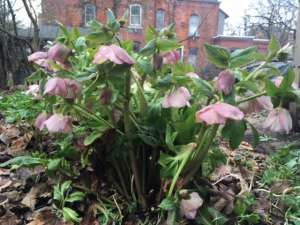
Lungwort (Pulmonaria): The spotty leaves are said to resemble a diseased lung, thus the name. (Wort is simply an old word for plant.) According to the Doctrine of Signatures, plants that resemble body parts could be used to treat those body parts. So, lungwort was once used to treat chest ailments. Now it is just grown for its pretty flowers. Found beside the fountain in the front garden.
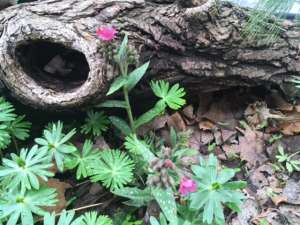
Hairy Bittercress (Cardamine hirsuta): A fascinating weed. After fertilization the small white flowers of hairy bittercress will grow into slender seed pods. When touched, the seed pod will explode sending its contents up to 10 feet away. Found throughout the garden. Photo taken by the water spigot in the back center.
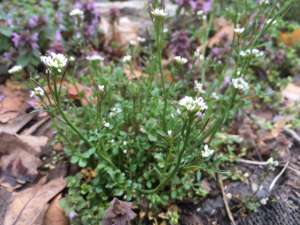
Purple Dead-nettle (Lamium purpureum): Another weed. Dead nettle is a member of the mint family and is edible. Found throughout the garden.
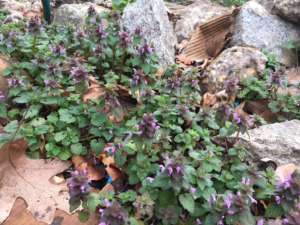
White Dead-nettle (Lamium alba): Yet another weed. Similar to purple dead-nettle, but with white flowers. Also edible. Found throughout the garden, but not as widespread as the purple. Photo taken in front of the back fence.
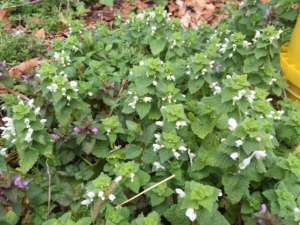
Speedwell (Veronica): Our final weed. I almost didn’t include this because they are nearly done flowering. But the tiny blue flowers are so cute that I had to. Found throughout the garden but hard to spot now that the flowers have mostly faded. Photo taken between the center bench and the round daffodil bed.
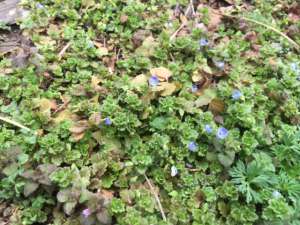
Primrose (Primula): Perky and bright, primroses come in many colors. Found in two pots on tables in the front of the garden.
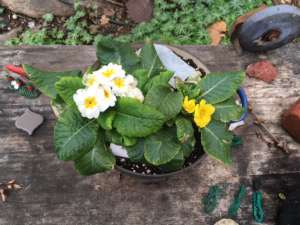
Viola (Viola tricolor): Viola has so many great common names, including Johnny jump up, heart’s ease, heart’s delight, tickle-my-fancy, jump-up-and-kiss-me, come-and-cuddle-me, love-in-idleness, and many others. They love cool weather and will happily grow and freely flower until summer heat arrives. Found in a planter beside the fountain and next to the center bench.
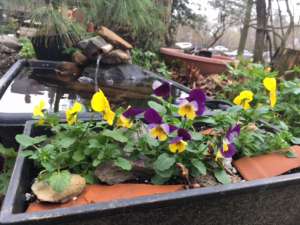
White Corydalis (Corydalis spp.): Little white flowers grow from a mound of ferny foliage. They reseed readily, but are easily removed. Found growing in the front wall above the sidewalk.
